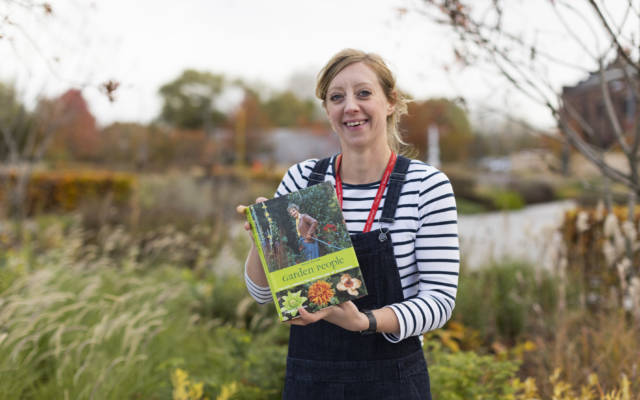
Diary of a Cultural Gardener – October 2020
03 Nov 2020
October is bulb planting season and this year we are planting them on a grand scale. Over 50,000 of these tiny living treasures are being buried amongst our perennials, such that every spring they will emerge to carpet the garden with romantic swathes of blue and white.
We are incredibly grateful to the Finnis Scott Foundation who have supported us with a grant to buy this year’s bulbs, which are primarily scilla, chionodoxa, puschkinia and anemones, with a couple of thousand tulips being added for good measure, along with snowdrops to be planted in the spring.
Creating year-round interest has been central to the design of our garden and during the first year, visitors have delighted in watching the planting change, such that every fortnight there is something new to see in bloom. These 50,000 bulbs are in addition to the 9,000 tulips and daffodils that we put in last year and together they will bring spectacular waves of successional colour to the very earliest months of the year.
Planting this quantity of bulbs requires some planning and the first stage of the process is to sort the bulbs when they arrive from Holland. The days are spent in the shed, measuring them into the quantities required per flowerbed. We store the bulbs in crates, which we stack up in columns and they act as a physical bar chart, with the tallest monoliths representing the beds with the most bulbs. When the weather allows, we then work to plant one bed at a time, throwing the bulbs down amongst the perennials according to an approximate plan, in swathes which intermingle in places – aiming to mimic the naturalistic way these bulbs might grow in the wild

Planting bulbs amongst perennials is a challenge, as we keep the vegetation in place for winter interest and cut it down in February, so we do not want to crush that display prematurely. Happily, we have been managing very well to carefully get the bulbs into the ground – sometimes stooping with a long-handled bulb-planter, sometimes crouching with a trowel, it is a repetitive job and it certainly keeps you warm.
When you are a professional gardener some seasonal tasks loom on the horizon as physical feats – some gardens have weeks of high hedge cutting, days of digging, or months of mulching. I often think of the year cyclically and when you repeat the same task for weeks at a time, the labour draws upon particular muscles and sinews intensely. As the seasons cycle, the demand rotates around your body in a similarly cyclical way; hedge cutting tightens your shoulders, digging your core and bulb planting coarsens your hands, fortifies your thighs. However, it is remarkable how quickly your body adapts and whilst after the very first day you feel the ache, after the second and third day, you don’t feel it at all.
Fortunately, I have not been alone in this huge mission and we are very grateful to our brilliant team of committed garden volunteers who have been vital in all stages of the process, from counting the bulbs in the shed, to digging thousands into the ground. As with all aspects of life now, Coronavirus is a renewed worry, but we have managed to work socially distanced and in small groups.
When we planted the bulbs last year, I found myself constantly crossing numbers off the schedule with every bed we planted, but this year I am trying to be a bit more relaxed about it. The process reminds me of a long car journey, whereby if you look at the sat nav clock a lot, the time goes down much more slowly than if you simply enjoy the view. However, I am absolutely delighted to say that as we come to the end of October, we have got the majority of the bulbs into the ground and only a few beds now remain.
As one of our volunteers said – with each bulb ‘we are digging our energy and care into the soil’ and this will come back to reward us with hope and new life, just when we need it in the still cold months of early spring.








